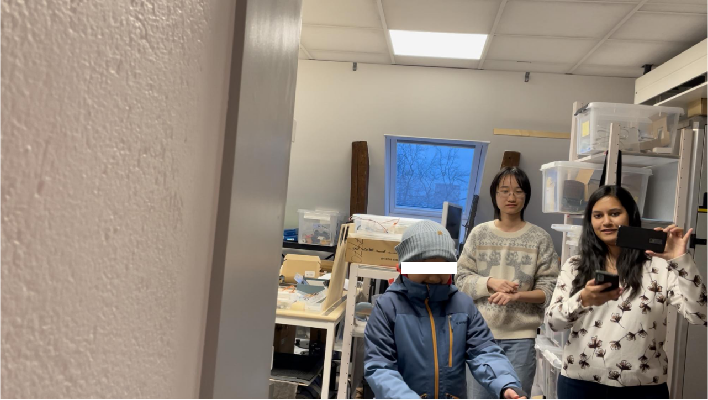Reflection on interviewing kids
- Yawen@kth
- Aug 24, 2022
- 2 min read
Updated: Oct 19, 2022
Background
In the design theme “playful portal”, we designed a pet door which interacts with children every time they open the door. The door can feel the stroke and hug of users, and has emotions that are expressed via facial expression, heartbeat and sound.
This is a group project, during which the electronic realization of the door was handled by me individually and the user evaluation was done by Ramya and me.
This article will review the user evaluation on two users, aged 10 and aged 15, and reflect what could be better.
Keywords: learning by doing, special users
Process
Pilot test: A pilot test was first conducted on myself and two classmates, in order to make sure that the system functioned well, the interaction was generally intuitive and the cameras for video recording worked.
Warm-up: Given that kids can easily get nervous in interviews, we had a casual chat about their basic information and the user test process, with snacks provided. Then we showed them around the lab. So they could get used to the environment and the interviewees.
Observation: To test the intuitiveness of the interface, one kid was instructed to experience the opening process of the door first and then to explain how it worked to another kid. From this, we were supposed to get how users understood the interface. During their interactions, I observed and took notes while Ramya controlled cameras.
Focus group: We interviewed the users together on their user experience in simple and open questions
(Permission is granted)
Mistakes
We generally get some useful feedback. But there were also some mistakes we had made.
The explanation between the kids was in Swedish.
Their native language is Swedish while the none of the interviewees spoke Swedish. Even though the voice recording was translated afterward, we couldn’t ask any questions based on their explanation during the interview.
The situation could be worse, if the kids were even younger. In this way, they might fail to understand the English instructions as well.
The camera was not at the perfect angle.
In the pilot test, we adjusted the camera according to the height of adults (female). This worked with the teenager, but not the 10-year-old kid. He was too short, so that the camera at the door couldn’t record his facial expressions.
Peer pressure limited the focus group method.
The purpose of utilizing focus group was to stimulate users to talk more via the answers of each other. However, we underestimated the fact that they were brothers. So when the older brother answered, the younger always tended to agree or follow. We spent the effort of interviewing two users, but gained the outcome of one user only.

Lessons
When interviewing less-educated users (kids, elderly, etc), one of the interviewees should understand their native language.
When In pilot test, always notice the body difference between the participants and the real users. Such as the visual and mobility between young and old, the height and weight between adults and children. Adjust the real evaluation accordingly.
Select interview method in terms of user group. We usually choose methods in terms of purpose, i.e what we want to get from users. However, it is equally important to notice the consequences caused by the user group. Focus group is definitely not an ideal method when the peer pressure among users is inevitable. Such as children with a gap of age.










Comments